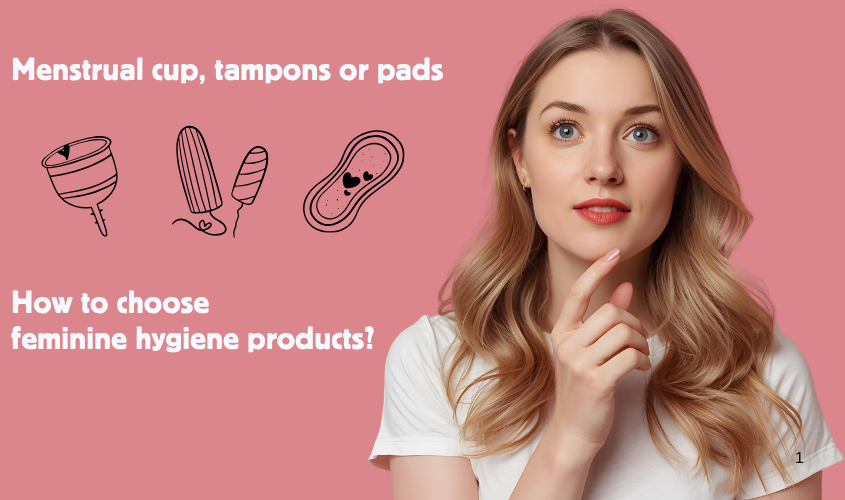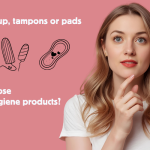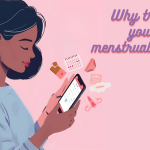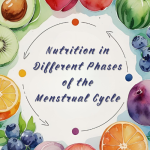
- 06.10.2025
- Menstrual Health Blog
An essential part of everyday life for every girl is choosing the right feminine hygiene products. In today’s world, there’s a wide variety of brands offering pads, tampons, and menstrual cups.
But which option is the best, the most comfortable, and safest for your health?
1. Daily pads
Many people can’t imagine their daily routine without panty liners. But are they really necessary during all phases of the menstrual cycle? Despite their convenience, daily pads create a “greenhouse effect.”
They are in constant contact with the external genital area, and the warm, moist environment encourages bacterial growth, which can eventually lead to infections.
You might say: “But how can I do without them? I have so much discharge that my underwear can’t handle it.” Don’t panic! Here are some gynecologist’s tips:
- choose pads that are individually wrapped;
- change them every 4 hours;
- use fragrance-free options;
- the top layer should be white, as dyes can cause allergies.
These simple tips will help you continue using daily pads without harming your health.
2. Pads for menstruation
Pads are one of the most common ways to prevent leaks during your period. In the past, women used homemade cloth pads, which offered very limited protection. Today, the choice is huge: scented or unscented, with or without wings.
Doctors recommend unscented pads. The size depends on your body type and flow. Many gynecologists emphasize that menstruation is a natural cleansing process, so it’s better to use products that don’t “trap” the discharge inside.
The number of drops shown on the package indicates absorbency. If you have heavy flow, choose pads with more drops.
Wings add comfort and help prevent side leaks.
Pads come in day and night versions. Day pads should be changed every 3–4 hours. At night, since we can’t always control the timing, night pads are larger and more absorbent.
3. Menstrual cup
The modern menstrual cup was invented by Leona Chalmers in 1956. It’s made of soft, flexible materials that make insertion into the vagina easy.
Like pads, cups come in different capacities and should be chosen according to your anatomy. They should be emptied and rinsed every few hours.
Wash your hands before removing the cup, rinse it under running water, and reinsert it. This method is not only eco-friendly but also very economical.
While you may need 6–8 pads or tampons a day, one cup can be reused for years.
4. Tampons
Tampons are made from similar materials to pads but have a cylindrical shape and are inserted into the vagina. Like other products, they come in different sizes and absorbencies (marked with drops).
Tampons are great for swimming, sports, or wearing tight clothing. However, there is an important health risk — Toxic Shock Syndrome (TSS). It can cause vomiting, diarrhea, high fever, weakness, and dizziness. The good news is that it can be avoided by changing tampons regularly and not exceeding the recommended wear time.
And remember — it’s important to track not only tampon or pad changes but your entire menstrual cycle. The Selin app can help with that.
5. Sponge tampons (without string)
These look like small sponges and are single-use. They can be worn while swimming or during vaginal sex since they are placed under the cervix. They also come in different sizes depending on your flow.
6. Reusable pads and period underwear
Let’s separate these two.
Reusable pads are made of multilayered fabric and shaped like regular pads. Snap-on wings keep them in place. This may seem practical and economical, but there are some drawbacks.
Just like regular pads, they should be changed every 3–4 hours or as needed. After use, they need to be washed. Washing machines can clean them well only with special detergents, but residue may remain inside the fabric over time, leading to mold and bacterial growth.
Period underwear works on the same principle. It can also be used together with a cup, tampon, or pad for extra leak protection.
We’ve looked at different feminine hygiene products. Each has its own benefits — convenience, eco-friendliness, or practicality — as well as drawbacks. There’s no single “right” choice; everyone will find what works best for them.
The only way to discover the most reliable and comfortable option is through personal experience. And don’t forget to change your hygiene products on time — the Selin app with its reminder function can help with that.














